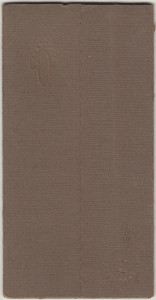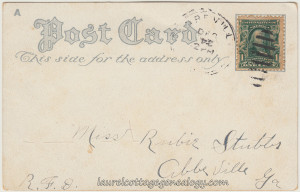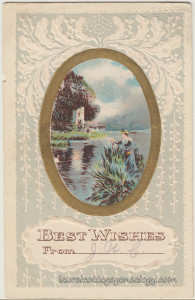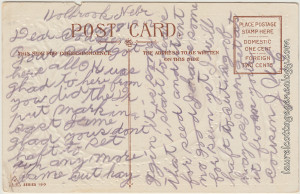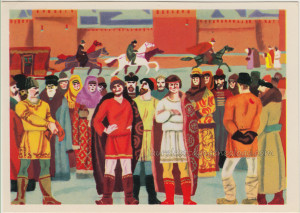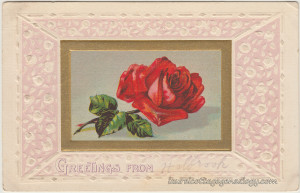This one was found in a small antique store in the Watsonville, California area. There is no writing on the back of the photo, and the only identifying information we have for the photographer is the embossed design at the top left of the photo cover and the embossed “H” at the cover’s bottom right. We have a dated photo of the same type showing under the posting entitled “Harriet L. Weston, 1917” so perhaps this photo is from around this date.
From a close-up view of the photo it looks like the young lady is wearing a jumper (sleeveless dress worn over a blouse) style outfit, except that the wide linen collar appears to be of a lighter color than that of the sleeves, so jumper may not technically be the correct term. In any case the outfit, though plain, was probably lovely. (Thinking of the quality of the fabrics.) It’s very possible that this is a school uniform, and most young ladies would surely scoff at the description of “lovely”, but in browsing other vintage uniform photos, we see that some of them were really very stylish, and anyway, who doesn’t appreciate a fine linen blouse? The other factor indicating that this could be a school photo is the fact that she wears no jewelry and wears her hair swept back from the forehead, and short in the back, to mid-ear. It’s hard to tell whether this is really a bob or if she had longer hair that was pinned up, but the style has that overall wholesome look.
Size: About 4 and 3/4″ x 2 and 1/4″ Date: circa 1915 – 1920.


